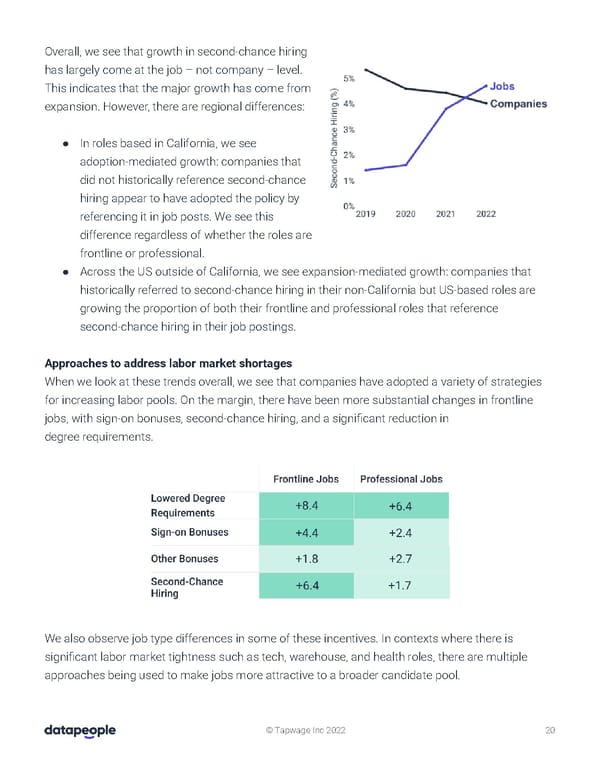Overall, we see that growth in second-chance hiring has largely come at the job – not company – level. This indicates that the major growth has come from expansion. However, there are regional differences: ● In roles based in California, we see adoption-mediated growth: companies that did not historically reference second-chance hiring appear to have adopted the policy by referencing it in job posts. We see this difference regardless of whether the roles are frontline or professional. ● Across the US outside of California, we see expansion-mediated growth: companies that historically referred to second-chance hiring in their non-California but US-based roles are growing the proportion of both their frontline and professional roles that reference second-chance hiring in their job postings. Approaches to address labor market shortages When we look at these trends overall, we see that companies have adopted a variety of strategies for increasing labor pools. On the margin, there have been more substantial changes in frontline jobs, with sign-on bonuses, second-chance hiring, and a significant reduction in degree requirements. We also observe job type differences in some of these incentives. In contexts where there is significant labor market tightness such as tech, warehouse, and health roles, there are multiple approaches being used to make jobs more attractive to a broader candidate pool. © Tapwage Inc 2022 20
 Hiring in Distributed World Page 20 Page 22
Hiring in Distributed World Page 20 Page 22